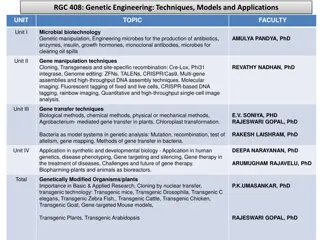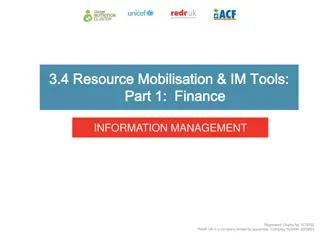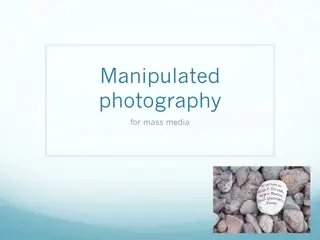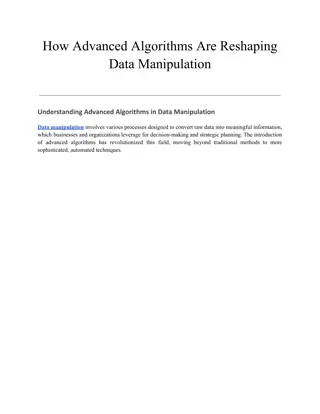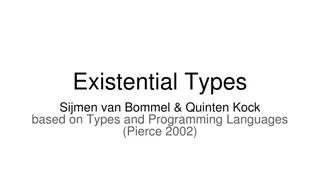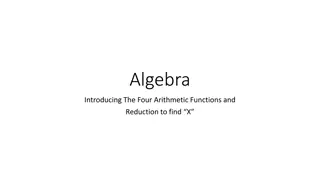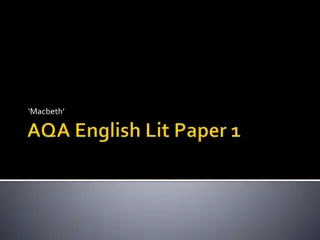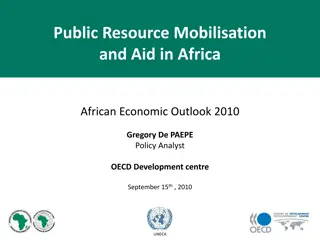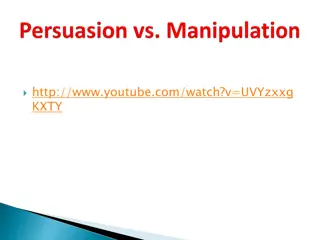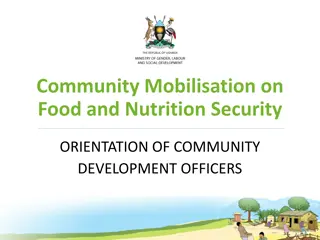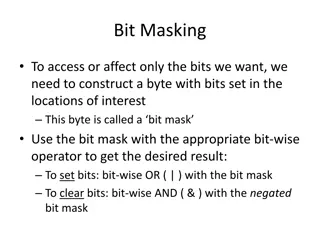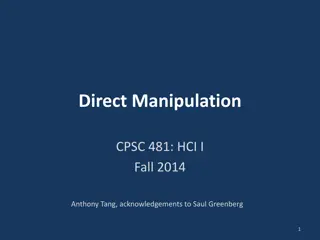Understanding Maitland Mobilisation and Manipulation Techniques
Maitland Mobilisation involves passive movements performed with rhythm and grades that the patient can control, while Manipulation is a precise localized technique involving quick, small movements. Key concepts include the patient-centered approach and the brick wall approach. Principles emphasize continuous assessment and gentle initial techniques. Mobilisation methods focus on joint positioning and mobilisation direction. Both techniques require attention to force application, location, direction, target, and patient position.
- Maitland Mobilisation
- Manipulation Techniques
- Patient-Centered Approach
- Principles of Assessment
- Joint Mobilisation
Download Presentation

Please find below an Image/Link to download the presentation.
The content on the website is provided AS IS for your information and personal use only. It may not be sold, licensed, or shared on other websites without obtaining consent from the author. Download presentation by click this link. If you encounter any issues during the download, it is possible that the publisher has removed the file from their server.
E N D
Presentation Transcript
MAITLAND MOBILISATION MAITLAND MOBILISATION
DEFINITION DEFINITION MOBILISATION Maitland defines mobilisation as passive movement that is performed with a rhythm and a grade in a manner in which the patient is able to prevent the technique from being performed Wise C, Beatti P, John S,et ol. Orthopaedic Manual Physical Therapy from art to evidence.2005;17.
MANIPULATION Manipulation as an accurately localized, single, quick and decisive movement of small amplitude following careful positioning of the patient Wise C, Beatti P, John S,et ol. Orthopaedic Manual Physical Therapy from art to evidence.2025;17.
KEY TERMS Accessory Movement Physiological Movement Injuring Movement Overpressure
KEY CONCEPTS OF MAITLAND TECHNIQUES Patient centred approach to dealing with movement disorder The brick wall approach
THE PATIENT- CENTERED APPROACH TO DEALING WITH MOVEMENT DISORDERS Through the conscious use of communication techniques and respect of the individual experience of a person.
THE BRICK WALL APPROACH THE BRICK WALL APPROACH
PRINCIPLE OF ASSESSMENT The continuous assessment before, during and after the application of each technique during each treatment session to session throughout treatment. The gentleness of the initial treatment techniques. The responses, both during and after application of treatment must be assessed and analysed before progressing.
PRINCIPLE OF MOBILISATION AND MANIPULATION TECHNIQUES Rate of force application Location in range of available movement Direction of force Target of force Patient position
METHODS OF MOBILISATION Place joint in resting position Determine treatment plane Determine direction of mobilisation using concave convex rule Patient s body well supported Patient and therapist relaxed
Stabilize one bone and mobilize the other. Usually stabilize proximal bone Contact should not be painful Therapist s hands should be close to joint surfaces as possible Stop the mobilisation test or treatment if too painful Initial mobilisation are in the loose pack position Assess before and after treatment
concave surface is fixed and the convex surface is moving Convex surface is fixed and the concave surface is moving
GRADES OF MOBILISATION Grade 1 - Small amplitude movement performed at the beginning of the range Grade 2 - large amplitude movement performed within the range Grade 3 - large amplitude movement performed up to the range Grade 4 - small amplitude movement performed at the limit of the range Grade 5 high velocity thrust performed at the limit of the range
POSTURAL DYSFUNCTION FOR JOINT MOBILIZATION
CONTRAINDICATION OF MOBILISATION Malignancy Unhealed or recent fracture Excessive pain Acute inflammation Osteoporosis Pregnancy Hypermobility Dizziness Neurological signs Spondylolisthesis
CONTRAINDICATION OF MANIPULATION Vertebrobasilar insufficiency Spinal canal stenosis
REFERENCES Wise C, Beatti P, John S, et al. Orthopaedic Manual Physical Therapy from art to evidence.2025;17. Donatelli A R, Wooden J M. Orthopaedic Physical Therapy. 2001;4: Cook E C. Orthopaedic Manual Therapy An evidence based approach. 2007;1-11. Hengeveld E, Banks K. Maitland s peripheral manipulation. 2005;4:1-25. Lee K, Lee K. Effect of maitland mobilisation in cervical and thoracic spine and therapeutics exercise and functional impairement in individuals with chronic neck pain. The journal of physical therapy science.2017;29:531-535. Kerry R, Taylor A ,Mitchell J, et al. Manual therapy and cervical arterial dysfunction , directions for the future: A Clinical perspective. The journal of manual and manipulative therapy. 2008; 16:39-48. Pozsgai M, Kovesdi E, Nemeth B, et al. clinical effect of end range maitland mobilisation in the management of knee osteoarthritis: A pilot study. In vivo. 2021;35:1661-1668.



